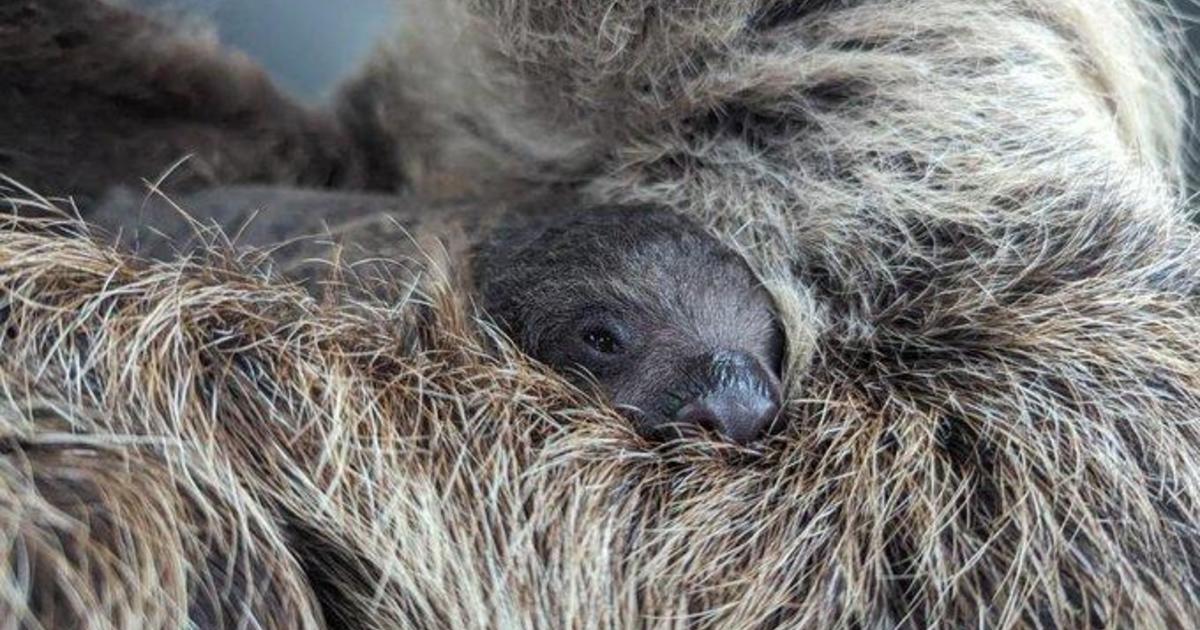Cripple Creek Gold Mine Exceeds Expectations
VICTOR, Colo. (AP) - The Cresson Mine between Cripple Creek and Victor was expected to operate only six years when mining began in 1994.
So much for predictions.
Nearly 20 years later, the mine is still going strong, thanks to additional gold finds and surging gold prices. In fact, mine operations are scheduled to last until at least 2025 - 25 years longer than originally anticipated - under a $585 million expansion that's underway. And they could continue 10 years beyond that with another expansion already in the planning stages.
The mine recovers and processes some of the lowest-grade gold ore in the world, annually generating more than 200,000 ounces of gold from more than 20 tons of ore that's extracted from an open-pit mine. Though the mine is the state's largest, it doesn't rank among the world's 10 largest.
"The mine has lasted until now because of our exploration success and higher gold prices," said Ray DuBois, vice president and general manager of Cripple Creek & Victor Gold Mining Co. The company is a unit of South African mining giant AngloGold Ashanti Ltd., which has been operating the mine since merging with the previous operator in 1999.
Gold prices jumped more than fourfold from mid-2005 to late 2011, peaking at nearly $1,900 an ounce, or more than triple what the company said was its cash cost of operating the mine at that time. Prices have since declined, but remain well above prices in 2010, when the current expansion project was developed and remain well above the company's cash costs of operating the mine.
The expansion isn't just good news for the company, but for Teller County's economy. At the peak of construction later this year, the mine will generate more than 6,000 direct and indirect jobs across the state with annual wages totaling more than $200 million, according to estimates in an economic analysis done for the mine by Summit Economics LLC of Colorado Springs.
More than half of the mine's employees live in Teller County, with one-fourth coming from Fremont and Pueblo counties, 8 percent from El Paso County, 6 percent from the Denver area and 7 percent from elsewhere, the analysis found.
The mine's average wage and benefit package totals nearly $80,000, or more than twice Teller County's median wage and benefit package.
The mine is the county's largest employer and "brings in a large number of good-paying jobs to the southern Teller County area that help diversify the local economy," said John Posusta, executive director of the Southern Teller County Economic Development Coalition. "A lot of people in this area would like to have better-paying, more stable jobs that don't depend on tips," which describes many of the more than 3,200 jobs at Cripple Creek's 14 casinos.
Posusta said he hopes the additional jobs the expansion is creating will help southern Teller County attract more apartments, an extended-stay hotel, a second gas station and other services.
Although gold mining has been part of Teller County's economy since 1890, the industry was largely inactive between the outbreak of World War II and the opening of the first outdoor gold recovery operation in the mid-1970s. The operation began as a way to recover low-grade deposits in rock discarded by earlier miners, but it exhausted its supply of waste rock by the late 1980s.
Limited mining began after that, but didn't really take off until the mid-1990s after a subsequent operator, Nerco Minerals Co., expanded its land holdings, began drilling and found a major gold deposit on the site of then-closed Cresson Mine.
The mine produced its first gold in 1995 after five years of planning and construction that included a second ownership change and delays tied to the Summitville Mine environmental cleanup disaster in southwestern Colorado, which prompted state regulators to give greater scrutiny to new projects, including Cresson. The delays and escalating costs prompted Nerco to put the project on hold, but the company sold its minerals operation a few months later to a unit of mining giant Minorco SA, which later merged with AngloGold.
The operation has produced more than 4 million ounces of gold in 18 years after overcoming other obstacles: declining gold prices in the late 1990s, that sent prices as low as $260 an ounce in 2002; a lawsuit by two environmental groups that the mine eventually won; and two deep recessions.
AngloGold and previous owners have spent nearly $800 million to expand the mine several times, including the early stages of the current project that will add up to 130 employees to its 520-person payroll starting late this year. The project also will create another 300 construction jobs to build a new leach field, recovery center and milling facility.
Employment isn't the only area getting a lift from the expansion. The project will boost the mine's annual output by about 40 percent to 350,000 ounces of gold.
The expansion also includes a new mill to process higher-grade ore from deep within the mine's open pit, which is expected to generate 40 percent of the mine's gold output from just 8 percent of its ore, DuBois said. The mill will grind ore to a fine, sand-like state, then inject a solution that will allow microscopic quantities of gold to attach to bubbles and float to the top of the solution. Construction on the mill is expected to begin this month and be completed late in 2014, he said.
The company also is building a new leach field, where a sodium cyanide solution extracts gold from rocks the size of gravel. The leach field will be in an area called Squaw Gulch, a horseshoe on Colorado Highway 67 between Cripple Creek and Victor. The company will reroute the highway atop a berm that is part of the new leach field.
Mining is expected to exhaust the company's available ore deposits by 2025. But company officials are planning another expansion that would begin late in this decade, according to a report on AngloGold's website. That expansion would continue open-pit mining by mining deeper through 2033 with ore gold production continuing for up to eight more years, followed by reclamation of the mined area.
Mine officials also are studying a return to underground mining for the first time since the last underground mine shut down nearly 30 years ago, DuBois said. The company report indicated that exploratory drilling last year validated "high-grade underground (mining) targets" that are several thousand feet below the surface - too deep to be reached with an open pit. Returning to underground mining is at least five years away and would require state and county approval. Proceeding with the plan depends on the results of further exploration and gold prices "remaining stable or going up," he said.
"We believe there is potential for deposits that might justify underground mining," DuBois said.
Although the project will initially create jobs, employment is projected to decline from more than 500 in 2025 to between 40 and 60 during the 12 subsequent years of reclamation, according to the analysis. However, the study does not take into account further expansion or underground mining.
While economic development officials see the mine as the bedrock of Teller County's economy, environmental groups sued the mine in the late 1990s alleging it repeatedly released excessive amounts of zinc and cyanide and had discharged pollutants without a permit. A federal judge ruled in 2002 that the Sierra Club failed to prove the allegations and dismissed claims by the Mineral Policy Center, saying the group had no standing to make a claim. A citizens group in Victor also criticized earlier expansions, citing concerns about noise and aesthetics.
At that time of the lawsuit, mine officials acknowledged past problems, but said they had worked with state and federal agencies to correct the issues. The mine hasn't had any violations since it paid a $125,000 fine in 2002 to settle with the Environmental Protection Agency and the Colorado Health Department over excessive discharge of pollutants caused by heavy rain in the late 1990s.
The mine, which has never had a fatal accident, cut its injury rate last year by more than a third to about 2.5 for every 200,000 hours worked. The mine's employees work a total of 1.5 million hours each year. DuBois said most of the injuries are strains, sprains, slips and falls.
- By WAYNE HEILMAN, The Gazette
(© Copyright 2013 The Associated Press. All Rights Reserved. This material may not be published, broadcast, rewritten or redistributed.)



